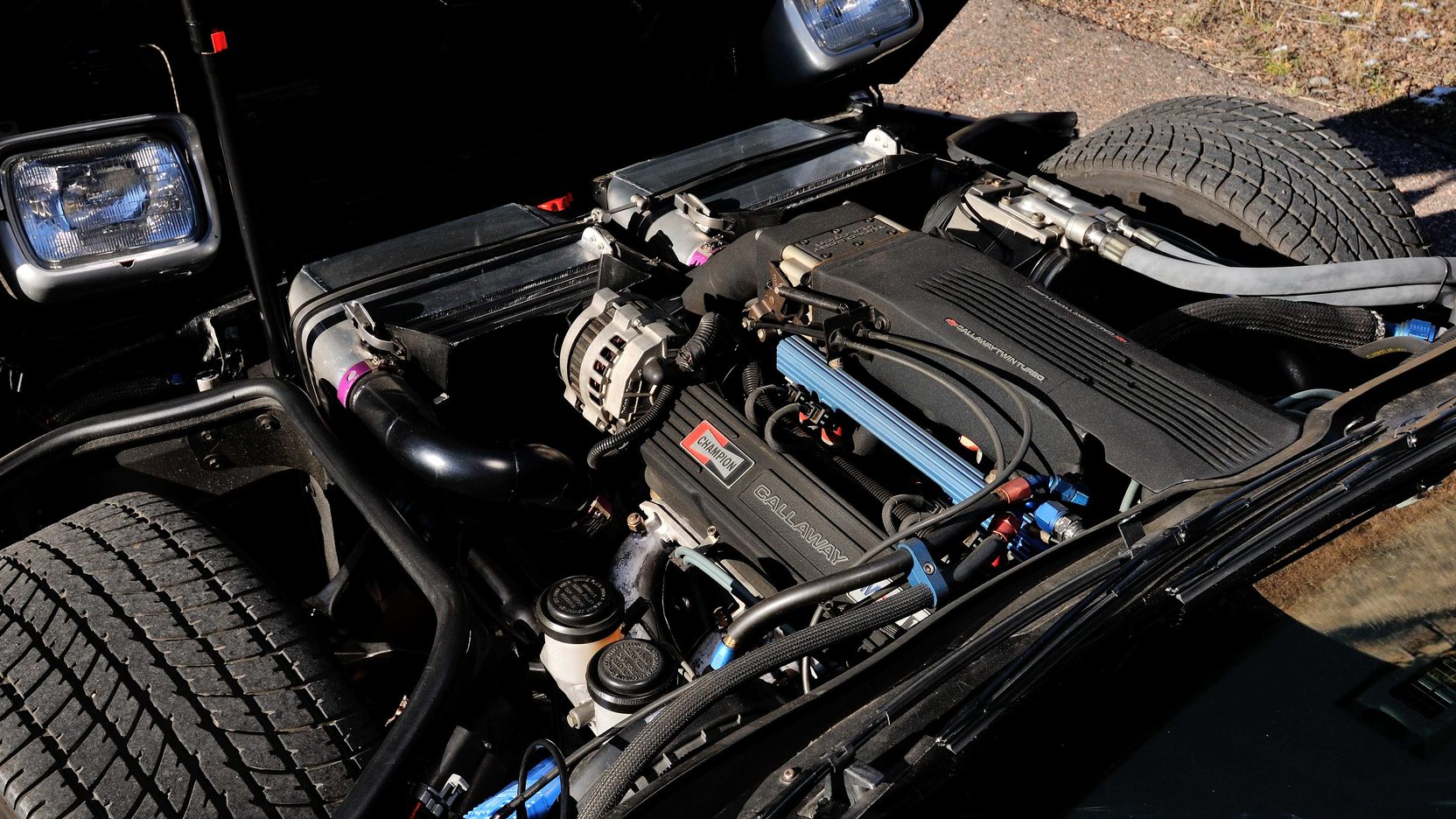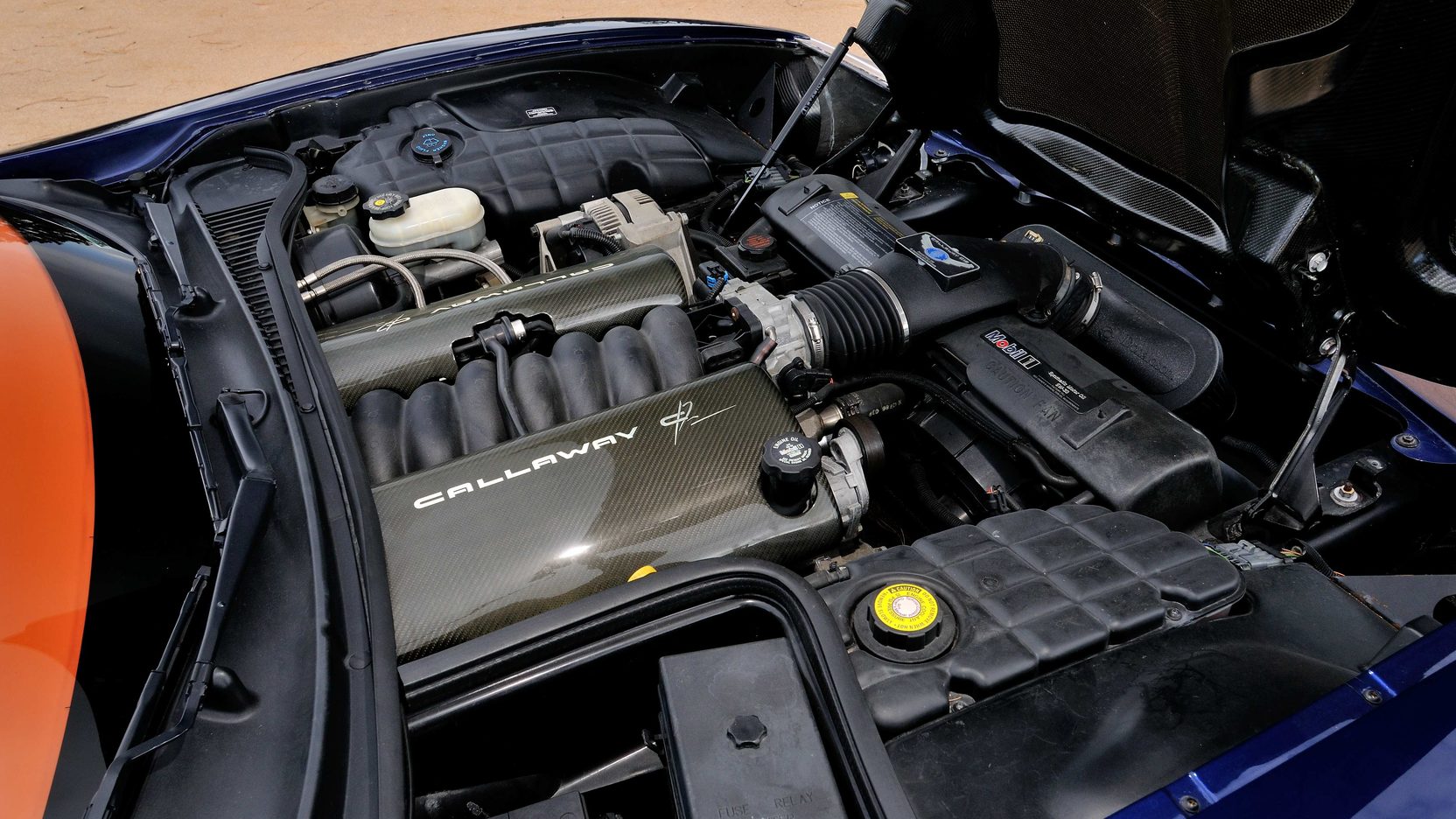The rise and fall of the Lingenfelter and Callaway Corvettes
The world has gotten quite cozy with the concept of the Chevrolet Corvette-as-supercar. After nearly 15 years of all-aluminum—then supercharged—Z06 models leading to the impossibly powerful blown Corvette ZR1, Chevrolet’s flagship can make a legitimate claim in standing toe-to-toe with some of the world’s mightiest, and most capable exotics.
Now stretch your brain back to the 1980s and you’ll realize that the Vette then existed in a very different context, on a landscape that was barren of domestic supercar fruit. During this period Corvette was still working to climb from the horsepower-neutering hole that emissions regulations had dug a decade prior. The aftermarket, however, kindly stepped in to restore America’s reputation around the world as the purveyor of sweet speed.
Match made in horsepower heaven
Say the words “twin-turbo Vette” to anyone over the age of 30, and chances are, after the obligatory Sir Mix-A-Lot verse, there are two names that will come to mind: Lingenfelter and Callaway. Although each of these companies have a deep history in both motorsports and high-performance street cars—Lingenfelter Performance Engineering was founded in 1978, Callaway Cars the year before—it wasn’t until each operation turned its attention specifically towards the C4 Corvette that the cars entered into popular consciousness.



In the beginning, however, it was only Callaway that was exploring the benefits of forced induction for the Corvette platform. After having built turbo kits for a variety of other vehicles, company principal and one-time race instructor Reeves Callaway developed a full twin-turbo package for the 1987 C4 Corvette.
The power bump was enormous: 345 horses and 465 lb-ft of torque, compared to a more sedate 240–250 ponies available from its stock L98 5.7-liter V-8. Even more remarkable was that the Callaway Twin Turbo Corvette could be ordered from GM using the B2K RPO code, and to this day it remains Chevy’s only third-party drivetrain package to not only be available “from the factory,” but also covered by the original 12-month new-car warranty.
That was just the beginning of Callaway’s adventures in Corvette land. The very next year the same package advertised a startling 382 hp and 565 lb-ft of torque, and by the end of production its output would settle at 403 horses and 575 lb-ft of twist. For the era this was incredible performance. Nothing produced by Ferrari or Porsche at the time could touch that level of raw power, with only the Lamborghini Countach finding itself in the same neighborhood. Reaching for the ultimate in bragging rights, in 1988 Callaway would produce the 898-hp Sledgehammer, an extroverted AeroBody edition of the car designed to deliver an eye-watering 254.76 miles per hour at the top end while remaining completely streetable (a Corvette speed record it held until 1999).


More than 500 Callaway TT Vettes were built between 1981 and ’91, costing roughly $26,000 over the regular Corvette’s $35,000 MSRP. Production would continue throughout the remainder of the C4’s lifespan, with the SuperNatural series of LT1- and LT5-powered cars cresting 490 horsepower for ZR1 based models.
NHRA racer John Lingenfelter’s first stab at a go-faster Vette was available two years earlier than the Callaway, but it took a more traditional path to power. Lingenfelter Performance Engineering initially punched the L98’s displacement out from 350 cubic inches to 383, but it was his work with the ZR-1 Corvette that appeared in 1991 that finally caught up to Callaway in terms of raw performance.
A variety of packages—each stroking out the LT5 engine—offered up to 6.8-liters of V-8 and as much as 640 hp and 510 lb-ft of torque, which translated into a 3.6-second sprint to 60 mph, and a 0–150-mph run in a mere 15.6 seconds. Not bad for $33k (plus your ZR-1). Lingenfelter also offered the option of bringing the LT1-equipped base C4 Corvette up past ZR-1 spec (390 hp, 425 lb-ft of torque) for an astonishing $20,000 less than the factory car’s MSRP.
Still fast, but GM catches up

It was a short step from drag strip glory and rad-looking aero packages to being splashed on the tenneagers’ walls in poster form for both Lingenfelter and Callaway. By the mid-90s, however, the sleeping General had begun to wake up to the profit potential posited by an in-house super-Vette of its own.
A few short years after the radically-redesigned C5 Corvette debuted in 1997, Chevrolet introduced the Z06, a car that found as much as 405 naturally-aspirated horsepower from its 5.7-liter V-8 right out of the box. It also went much farther than any aftermarket company could reasonably expect to go in terms of chassis development, thanks in large part to its all-aluminum frame.
Lingenfelter would counter the C5 Z06 first with the tried, tested, and true embiggening of the LS1 block in the standard Corvette, then by going over to Callaway’s dark side by way of building twin-turbo, 800-hp 427 cars that munched the quarter mile in 10.2 seconds. After a brief flirtation with producing a near complete redesign of the C5 called the C12, Callaway would turn to supercharging in an attempt to remain competitive with Chevy corporate.
It wouldn’t last. The C6 Corvette Z06 gained 505 hp from a 7.0-liter V-8, while the C6 ZR1 supercharged a 6.2-liter mill to deliver a startling 638 ponies and 604 lb-ft of torque. Much more importantly, however, each of these monster Vettes came with a full factory warranty and excellent maintenance and repair support provided by the GM mothership, something neither Lingenfelter nor Callaway could offer (with the RPO-based ordering process having been long since abandoned).



Although they continued to provide upgrade packages and churn out impressively-muscled Corvettes (and weirdos like the Callaway Aerowagen), by the time the current C7 Z06 and ZR1 models hit the streets—producing 650 and 745 horsepower, respectively—Lingenfelter and Callaway had been shunted farther and farther from the Corvette mainstream, sought out by a small pocket of fans willing to take a chance on a third-party performer, or those seeking parts, rather than full packages, for their cars. Everyone else just went down to their local dealership to pick up the keys to one of by-now several long-awaited factory Corvette supercars.
Fist in the air
Lingenfelter and Callaway haven’t been marginalized or forgotten, like so many other ‘80s-era tuners. But their original decade-long dominance of the Corvette performance scene stands as an intriguing time capsule from an era in which Chevrolet seemed completely unwilling to kneel at the altar of extreme speed or marshal its significant resources to build a super-Vette of its own. These two companies stepped in to fill a gaping hole in the realm of American sports car performance, and it could be argued that the enthusiastic response generated by their loyal customers was a big part of what convinced the Bowtie to develop first the original ZR-1 and then open up the floodgates for the truly bonkers Z06 and later ZR1 models that followed.

Today, original Callaway and Lingenfelter cars can still be found on auction blocks and in classified listings, commanding significantly less cash than their slower Italian contemporaries. It’s not unusual to pick up a Lingenfelter C4 in the $20k to $30k range, with Callaway twin-turbo cars in a similar bracket.
Both companies also continue to support their early monsters, which makes them far less perilous to the pocketbook that European options for curious sports car fans interested in driving something a little different. Still, aside from one-off builds, these aren’t investment-grade automobiles, but rather artifacts that celebrate the long tradition of outsider speed that erupts from the minds of determined gearheads and engineers when Detroit says “no.”





